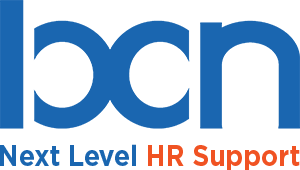In today’s competitive job market, it’s crucial for businesses to offer attractive employee benefits in order to retain top talent and attract new skilled workers. One such benefit that can make a significant impact is a comprehensive retirement plan. While many companies offer traditional 401(k) plans, partnering with a Professional Employer Organization (PEO) can provide additional advantages that can boost employee retention and attract top talent.
Cost Savings
One of the key benefits of a PEO retirement plan is the cost savings it offers for both the employer and the employees. By partnering with a PEO, businesses can leverage the buying power of a larger organization, which often translates into lower investment fees and administrative costs. This not only saves money for the employer, but it also allows employees to maximize their retirement savings by reducing the amount of fees they pay.
Wider Range of Investment Options
In addition to cost savings, a PEO retirement plan can also provide employees with access to a wider range of investment options. Traditional 401(k) plans often offer a limited selection of investment choices, which may not align with the diverse needs and preferences of employees. PEO retirement plans, on the other hand, typically offer a broader range of investment options, including low-cost index funds, target-date funds, and even socially responsible investment options. This flexibility allows employees to customize their investment portfolios based on their individual financial goals and risk tolerance.
Administrative Support
Another advantage of a PEO retirement plan is the added convenience and administrative support it offers. Managing a retirement plan can be a complex and time-consuming task, requiring HR teams to dedicate significant resources to ensure compliance and handle administrative tasks. By partnering with a PEO, businesses can offload these responsibilities to experts who specialize in retirement plan management. This not only saves time and reduces the burden on HR teams, but it also ensures that the retirement plan is being managed efficiently and in compliance with all relevant regulations.
Education and Support Services
Furthermore, PEO retirement plans often provide additional employee education and support services. These can include financial wellness programs, retirement planning resources, and one-on-one consultations with retirement specialists. By offering these resources, businesses can help their employees make informed decisions about their retirement savings and feel supported throughout their financial journey. This can enhance employee engagement, satisfaction, and loyalty to the company.
Compliance support
PEOs are well-versed in retirement plan compliance regulations and can help businesses navigate complex legal requirements. This can help businesses avoid costly penalties and legal issues associated with non-compliance.
Access to top-tier providers
PEOs have established relationships with reputable retirement plan providers, giving businesses access to high-quality investment options and services. This can help businesses offer competitive retirement benefits to attract and retain top talent.
Employee satisfaction and retention
Offering a comprehensive retirement plan through a PEO can enhance employee satisfaction and increase retention rates. Employees value the opportunity to save for their future and appreciate the convenience and support provided by PEO retirement plans.
Expert guidance
PEOs have a team of HR and retirement plan experts who can provide guidance and support to businesses and their employees. This expertise ensures that businesses are making informed decisions and are on track to meet their retirement plan goals.
Trustee Services
One of the primary responsibilities of an employer-sponsored 401k plan is to comply with the Federal ERISA Law. This includes tasks such as investment committee management, fund performance reviews, investment selection, fee assessments, and day-to-day plan functions. These tasks can be time-consuming and carry inherent risks, which is why they are expertly handled by the PEO. PEOs sponsor Multiple Employer Plans (MEPs) that offer comprehensive plan features similar to standalone plans, but with the added convenience of a simplified adoption process, ease of transfer, and reduced responsibilities for the worksite employer.
Trustees of PEO MEPs also engage independent CPA firms to conduct annual audits, at a significantly lower cost per employer.

